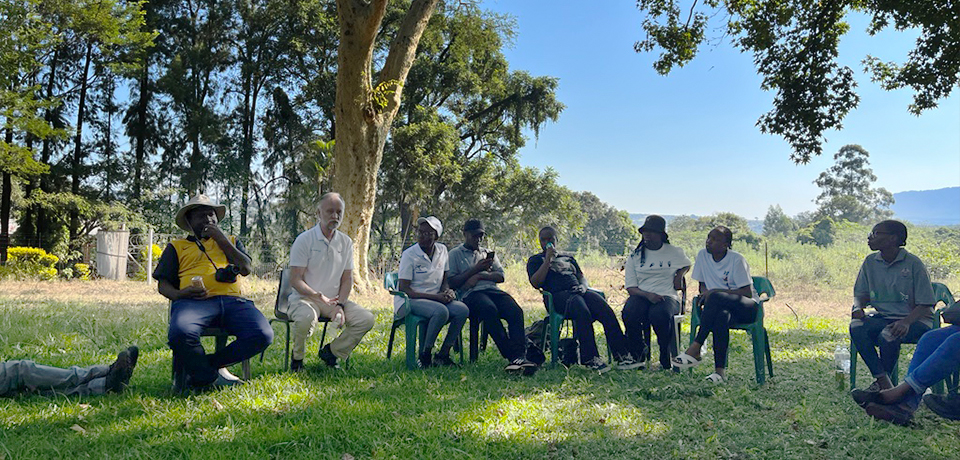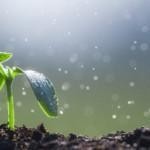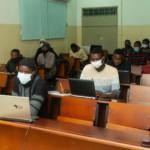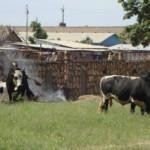
Iida-Mari Niemi, Sabrina Luff & Satu Määttänen
Climate change is one of the most pressing concerns of current times, threatening critical natural resources such as agricultural land and forests worldwide. The impacts of climate change can lead to constrained agricultural yields and wood production, subsequently causing food insecurity and loss of livelihoods (Mbow et al., 2019; Morison & Matthews, 2016).
There are no easy solutions to climate change. Climate change is a cross-cutting and global challenge that affects all societal sectors, disciplines, and nations. To cope with climate change requires international and interdisciplinary collaboration, and competencies beyond content knowledge.
Providing students — the future change makers — with competencies to deal with complex and interlinked issues is crucial for building climate resilience. To improve climate change education, and subsequently pave the way for a sustainable future, UNESCO (2022) recommends interdisciplinary as well as “learner-centred, experiential and reflective” approaches in teaching and learning, together with “contextualized — education through engagement with the local community”.
Problem-based learning (PBL) is a recommended teaching and learning technique that combines student-centrism, authentic learning, and often interdisciplinarity. In PBL, learning happens through solving real-life problems within student teams. Studies show that PBL develops core 21st-century competencies– such as collaboration, communication, and problem-solving skills – which are needed to develop solutions to global and local challenges, such as climate change (Abbey et al., 2017; Tan et al., 2014).
This article explores PBL from the students’ point of view, based on the experiences of the two first authors of the article. The article presents and reflects the PBL experience, focusing on multidisciplinary and multicultural learning settings.
Student challenge on climate-smart solutions through multiple land-use management
As part of the Forest21 (www.forest21.org/) project, the two first authors of this article participated in a student challenge focusing on climate-smart land management. Student challenge is a teaching and learning design, complying with the PBL approach. In the student challenge, students are exposed to real-life problem(s) or need(s) for which the students develop solutions in interdisciplinary teams (Määttänen et al., 2022).
The student challenge was organized jointly by the South African universities; University of Venda (Univen), Fort Cox Agriculture and Forestry Training Institute (FCAFTI), and Häme University of Applied Sciences (HAMK) from Finland. The challenge ran from January to May 2023, including a preparation, fieldwork in South Africa, and report writing. The aim of the student challenge was for the students to learn about and subsequently provide climate-smart solutions in support of and through land-use management.
The HAMK students’ collaborative work started with ten preparation meetings before the actual field period. The students shared information about forestry, agriculture, and South Africa in the means of articles and videos.
The preparation period was followed by a two-week field trip in the northern province of Limpopo in South Africa, hosted by Univen. Upon meeting with other challenge participants, each student mentioned their respective study program and described what knowledge they could contribute to the interdisciplinary student challenge work. The students were then grouped into three multidisciplinary and multicultural teams with six members each, all working on the same task.
The fieldwork took place on a local farm in the Vhembe district, approximately 420 kilometres from the administrative capital of Pretoria. Ratombo farm produces fruits and nuts, and in addition to 1 317 hectares of agricultural land, it contains 250 hectares of forest within steep slopes.
Students gathered information about the farm by studying business and waste management plans, as well as background reports of the farm, interviewing the farm manager, and by touring and familiarizing with the farm area.
Based on the expertise of the students, the information collected during the preparation period, and the data collected during the field period, the students designed a sustainable and climate-smart land management plan for the Ratombo farm.
Communicating within multicultural and interdisciplinary teams
The multiculturality and interdisciplinarity of the student teams were a huge strength. Indeed, the whole aim of the interdisciplinary and multicultural teamwork was to boost creativity and maximize the knowledge contained within each group.
Yet, this setting also aroused challenges. One of the main challenges in the interdisciplinary and multicultural teams was communication. Students from different nations, disciplines, and with other personal characteristics communicated differently, which, at the beginning, caused misunderstandings and slowed down the teamwork.
Some team members were shy and quiet, and their knowledge was challenging to incorporate into the group knowledge. This, in turn, slowed down the overall expertise and idea generation. However, the more time was spent among the team members, the more talkative the shy people got.
Cultural differences also affected communication. During the field trip, we learned the differences between South African and Finnish ways of communication. According to our observations, South Africans tend to talk at length and politely, thanking after a speech and after being asked a question. The communication, at least within the learning setting, had a formal tone to it. Finns in turn, tended to speak in short sentences and were not used to thanking as often. We also noticed that the relationships and communication between Finnish students and teachers were more equal and familiar than the South African counterparts, who seemed to have a very clear student-teacher hierarchy that affected the way students, for example, addressed their teachers.
Multidisciplinary caused challenges to communication. Different disciplines host different terms, meanings, and articulation, which hamper effective understanding between representatives of other disciplines. Bracken & Oughton (2006) recommend multidisciplinary teams to allocate sufficient time and effort in developing commonly shared vocabularies and general understanding. The common understanding among the team members is crucial in enhancing trust, a pre-requisite in effective teamwork (Bracken & Oughton, 2006).
Developed skills and attitudes
We noted that the communication and collaboration within the student teams improved with the days passing. Everyone adapted to the new communication and working styles developed in the teams. We expect the improved communication and teamwork skills of the students to be an asset in their future careers, and in the world of work where multiculturality and -disciplinarity are becoming the everyday norm.
The students aimed to combine their strengths to learn from each other and to provide a feasible outcome to the challenging task. The interdisciplinary work of the challenge was a great opportunity to exchange knowledge with peers. Due to the knowledge sharing, the intensity and hands-on approach of the challenge, the learning seemed more efficient than a basic lecture mode of teaching.
The field challenge showed us the importance of climate resilience. We learned to apply knowledge to build future scenarios and plan current actions to prepare for future events. This is a core skill for any professional, especially in the field of land-use management, where decisions and strategies should be based on long-term impacts and sustainability.
Conclusion
We recommend that future student challenges and all similar learning modules devote enough time and emphasis to team building and preparation. To increase students’ motivation and improve teamwork dynamics and efficiency – and subsequently improve learning –, we strongly suggest teaming up the students online and getting them to know each other, as well as initiating them correctly to the challenge topics and tasks well ahead of the actual fieldwork period.
Based on our experience, we believe that through the utilisation of different cultural and disciplinary knowledge, and with solution-oriented approaches, we can together find possibilities to build climate-smart and resilient futures across the world.
Authors
Iida-Mari Niemi is a student at Häme University of Applied Sciences, Forestry (Bachelor of Natural Resources).
Sabrina Luff is a student at the Nürtingen-Geislingen University of Applied Sciences, Landscape Planning and Nature Protection (Bachelor of Engineering).
Satu Määttänen, M.Sc. in Agricultural Sciences and M.Sc. in Environmental Science and Policy from the University of Helsinki. She works as a Research Assistant at Häme University of Applied Sciences in the HAMK Bio Research Unit, Finland.
References
Abbey, Lord, Dowsett, E., & Sullivan, J. (2017). Use of problem-based learning in the teaching and learning of horticultural production. Journal of Agricultural Education and Extension, 23(1), 61–78. https://doi.org/10.1080/1389224X.2016.1202846
Bracken, L. J., & Oughton, E. A. (2006). ‘What do you mean?’ The importance of language in developing interdisciplinary research. Transactions of the Institute of British Geographers, 31(3), 371–382. https://doi.org/10.1111/J.1475-5661.2006.00218.X
Määttänen, S., Knuutti, U.-M., & Laitinen, E. (2022). Piloting international student challenges: results on students’ perspective. HAMK Unlimited Professional, 26.9.2022. https://urn.fi/URN:NBN:fi-fe2022062047869
Mbow, C. C., Rosenzweig, C., Barioni, L. ., Benton, T. ., Herrero, M., Krishnapillai, M., Liwenga, E., Pradhan, P., Rivera-Ferra, M. G., Sapkota, T., Tubiello, F. N., & Xu, Y. (2019). Food Security. In P. . Shukla, J. Skea, E. Calvo Buendia, V. Masson-Delmote, H.-O. Pörtner, D. . Roberts, P. Zhai, R. Slade, S. Connors, R. van Diemen, M. Ferrat, E. Haughey, S. Luz, S. . Neogi, P. Pathak, J. Petzold, J. Portugal Pereira, P. Vuas, E. Huntley, … J. Malley (Eds.), Climate Change and Land: an IPCC special report on climate chnage, desertification, land degradation, sustainable land management, food security, and greenhouse gas fluxes in terrestrial ecosystems. https://doi.org/https://doi.org/10.1017/9781009157988.007
Morison, J. I. ., & Matthews, R. B. (2016). Agriculture and Forestry Climate Change Impacts Summary Report. https://www.ukri.org/wp-content/uploads/2021/12/131221-NERC-LWEC-AgricultureForestryClimateChangeImpacts-ReportCard2016-English.pdf
Tan, D. K., Koppi, A., & Field, D. J. (2014). The student perspective in developing graduate attributes through problem-based learning in first year agricultural science. Proceedings of The Australian Conference on Science and Mathematics Education, 170–175. https://openjournals.library.sydney.edu.au/index.php/IISME/article/view/7784
UNESCO. (2022). Youth demands for quality climate change education. https://unesdoc.unesco.org/ark:/48223/pf0000383615





